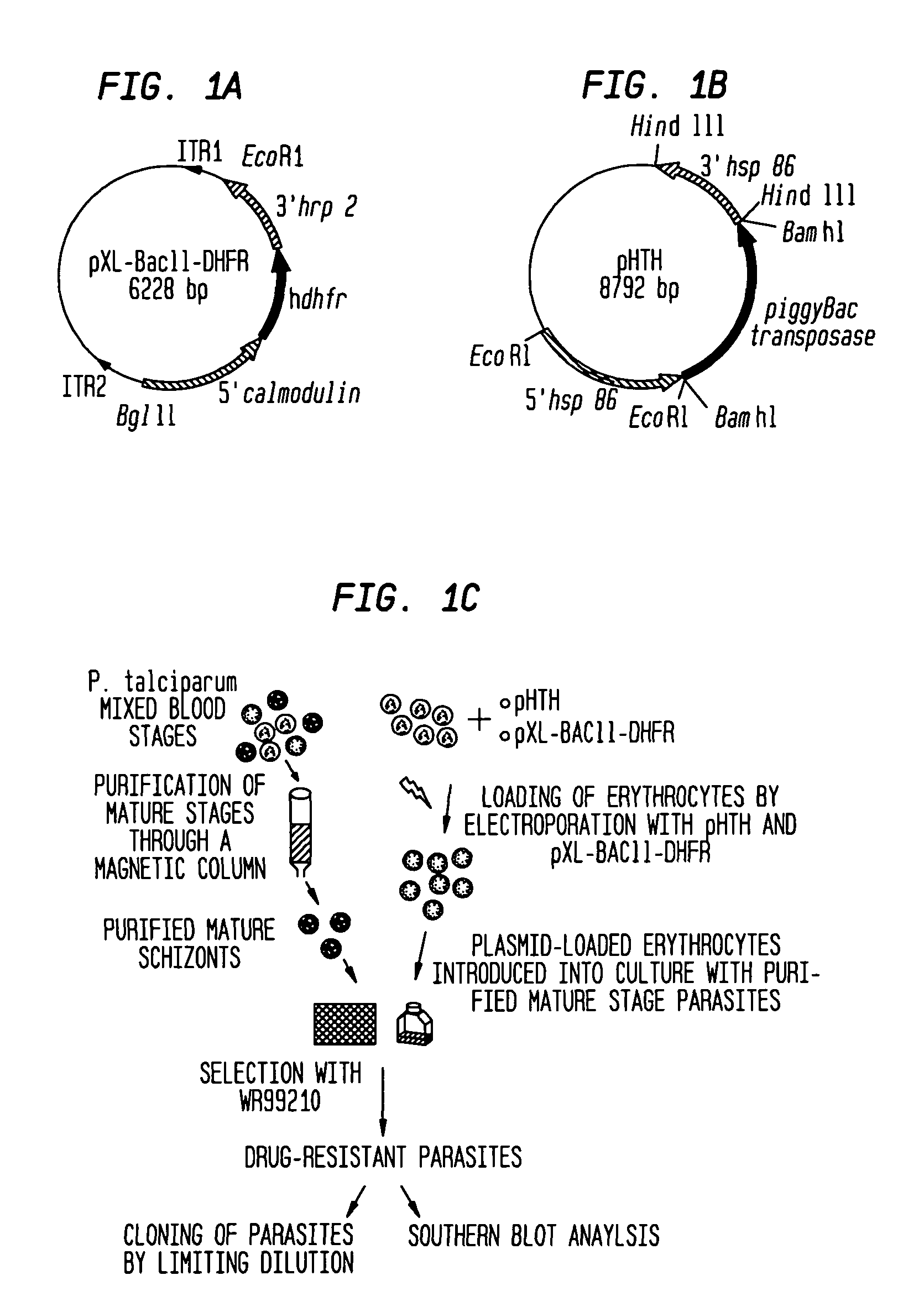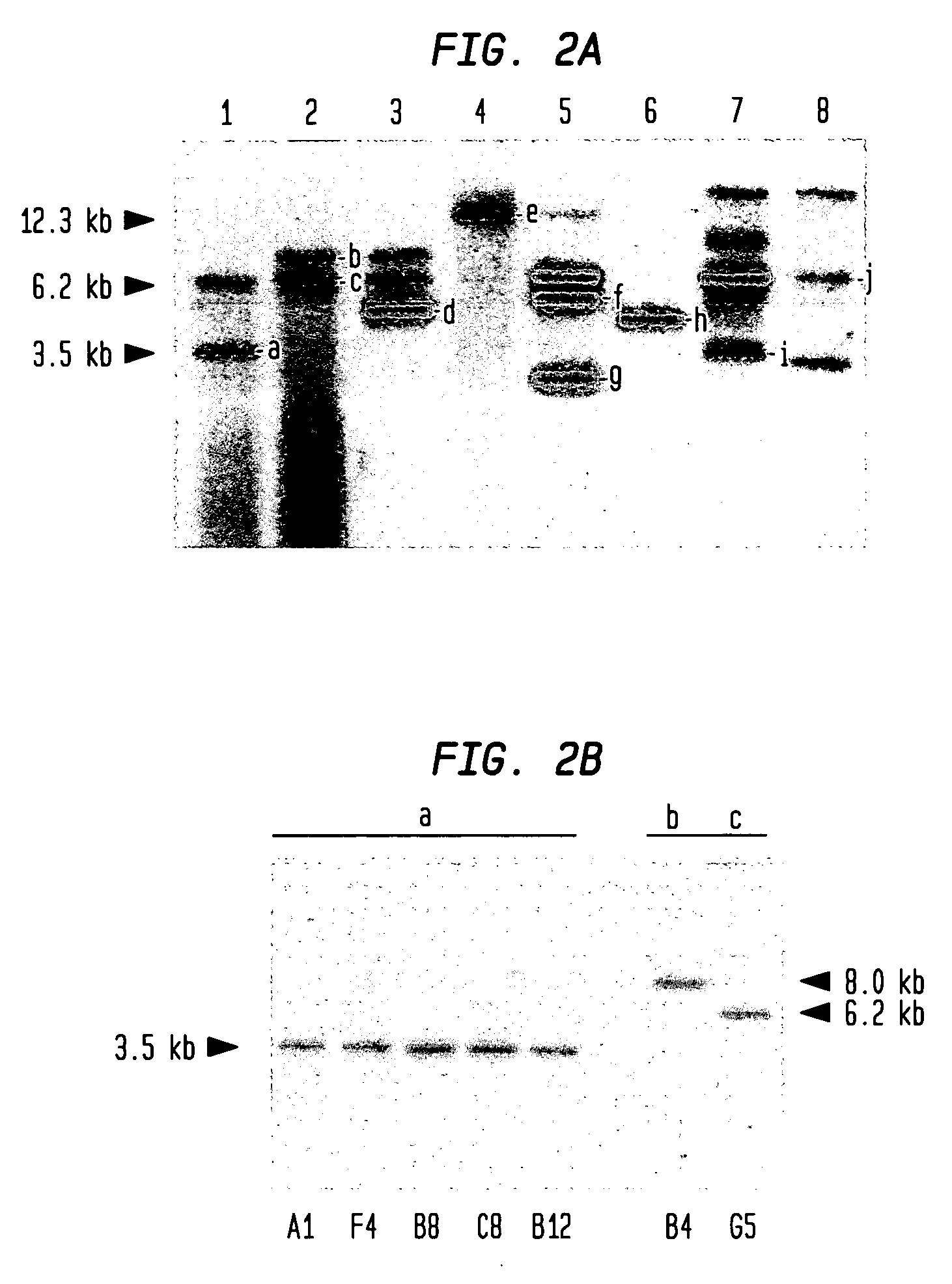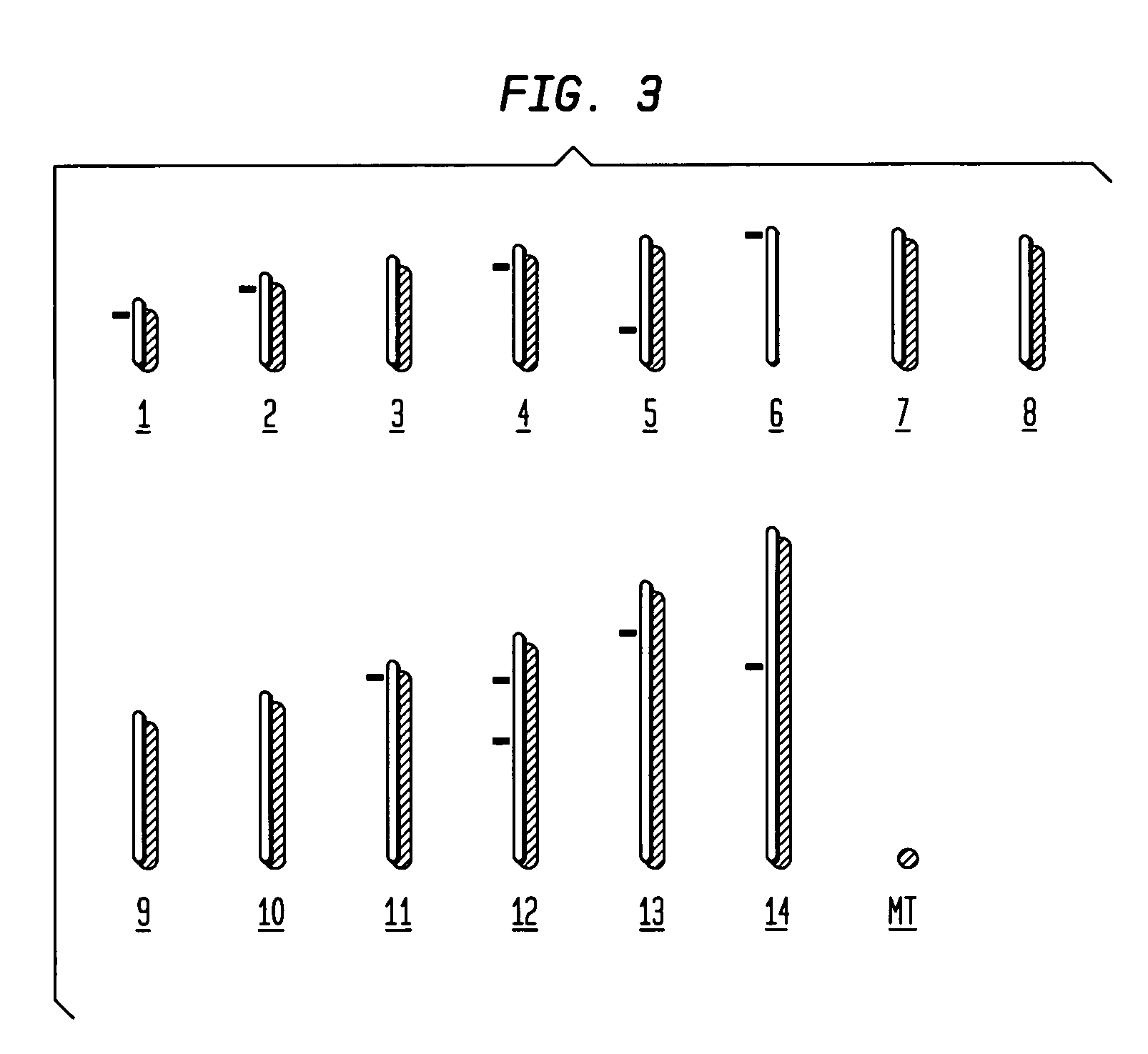High efficiency transformation of Plasmodium falciparum by the lepidopteran transposon, piggyBac
- Summary
- Abstract
- Description
- Claims
- Application Information
AI Technical Summary
Benefits of technology
Problems solved by technology
Method used
Image
Examples
example 1
High Transformation Efficiency of P. Falciparum Using PiggyBac Method
[0055]The present example demonstrates the utility of the present invention for use as a highly efficient method for transforming disease transmitting parasites, such as P. falciparum, using the piggyBac constructs and a helper plasmid as defined herein. These methods provide a P. falciparum transformation technique that is at least 100 times more efficient than those previously available.
[0056]A minimal piggyBac transposon vector, pXL-BACII-DHFR, was created by cloning the human dihydrofolate reductase (hdhfr) coding sequence under the control of Plasmodium 5′ and 3′ regulatory elements of calmodulin and histidine rich protein-2, respectively, in the plasmid vector, pXL-BACII.24 This drug resistance cassette was flanked by the 3′ inverted terminal repeat (ITR1) and the 5′ inverted terminal repeat (ITR2) of the piggyBac element (FIG. 1A). The ITRs are oriented such that, upon transposition, they will carry the drug...
example 2
Stability of PiggyBac-Transformed P. Falciparum
[0061]The present example demonstrates the utility of the present invention for providing stable genetically modified malarial parasites, Plasmodium falciparum, that was achieved using the piggyBac construct defined herein in the presence of a helper plasmid. The transformed P. falciparum were stable for at least 20 generations in the absence of a helper plasmid. The present example also demonstrates the utility of the method for providing multiple random insertions into the P. falciparum genome using the piggyBac constructs in the presence of a helper plasmid.
[0062]In order to test the stability of piggyBac integrations in the genome, parasites from populations “1” and “2” were cloned by a limiting dilution method.27 Southern blot hybridizations with an hdhfr probe identified clones with integrations into the genome. Clones A1, B8, B12, C12 and F4 derived from population “1” appeared to have the same integration, “a”, while clones B4 ...
example 3
Multiple Site Transformation of P. Falciparum Genome Using PiggyBac Construct Method
[0064]The present example demonstrates the utility of the present invention for providing multiple, random insertions into a P. falciparum genome.
[0065]To identify the sites of integration in the transformed populations, inverse PCR analyses were performed at the ITR2 of piggyBac28. The inverse PCR products were then cloned into the pGEM T-easy vector (Promega) and sequenced.
[0066]From the multiple integrations obtained in the transformed populations, nine (9) different insertion sites were isolated and identified. These insertions represented the predominant population in each transfection study, and therefore were identified with ease (FIG. 2A). The nine (9) identified insertions were dispersed in different chromosomes throughout the genome of the parasite (FIG. 3). Sequence analysis of these nine insertions confirmed a consensus TTAA-site specific integration of the piggyBac element into the paras...
PUM
| Property | Measurement | Unit |
|---|---|---|
| Fraction | aaaaa | aaaaa |
| Angle | aaaaa | aaaaa |
| Angle | aaaaa | aaaaa |
Abstract
Description
Claims
Application Information
 Login to View More
Login to View More - R&D
- Intellectual Property
- Life Sciences
- Materials
- Tech Scout
- Unparalleled Data Quality
- Higher Quality Content
- 60% Fewer Hallucinations
Browse by: Latest US Patents, China's latest patents, Technical Efficacy Thesaurus, Application Domain, Technology Topic, Popular Technical Reports.
© 2025 PatSnap. All rights reserved.Legal|Privacy policy|Modern Slavery Act Transparency Statement|Sitemap|About US| Contact US: help@patsnap.com



